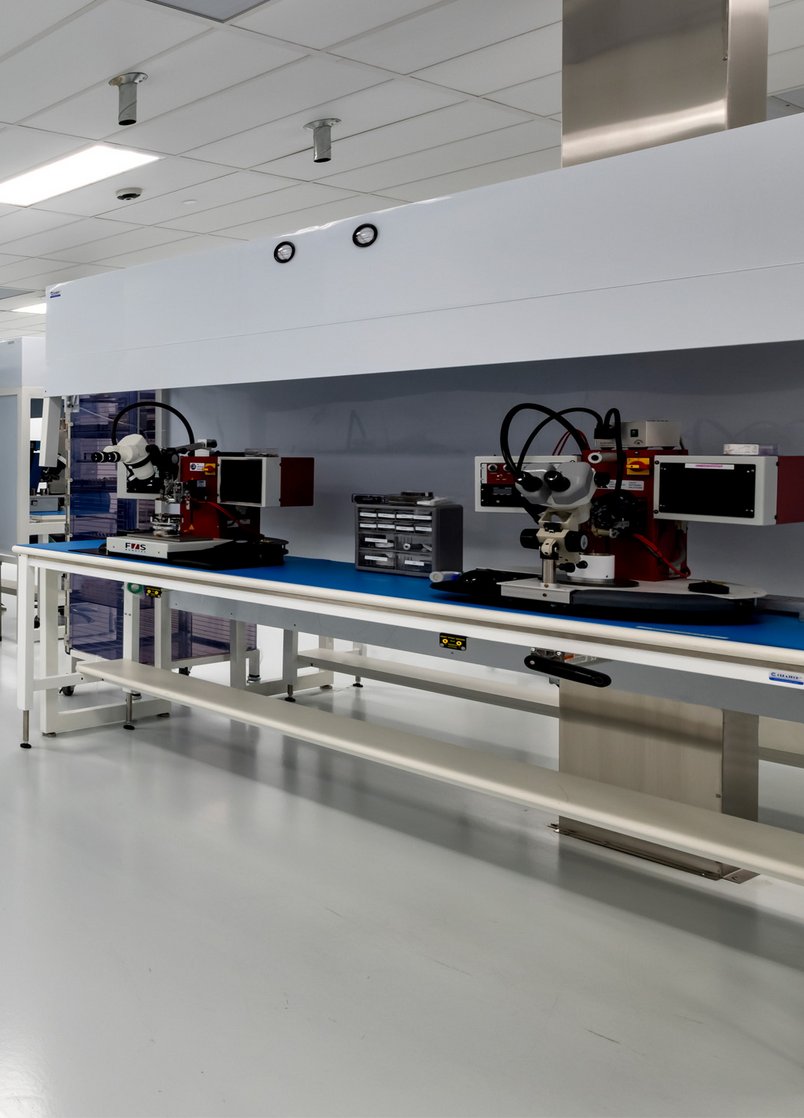Distance Measurements Prevent Collisions
For vehicles to drive autonomously or unmanned aerial vehicles to fly alone, they must be able to recognize obstacles in order to avoid them. Monitoring surroundings using LiDAR systems has many advantages: These systems are not only inexpensive, but they can also measure distances of up to 100 meters. LiDAR is short for Light Detection and Ranging.
During measurement, pulsed laser diodes (PLDs) are used as emitters and avalanche photodiodes (APDs) as receivers; this measurement principle is based on optical time-of-flight (ToF) measurements.
Optical ToF Measurements
Beyond Borders
The principle of optical ToF measurement can be easily explained: A PLD sends a single short light pulse; ideally, this light propagates undisturbed along the shortest path through the air until it detects an obstacle. At the obstacle, light is reflected and the pulse returned to be detected by an APD. The electronics that connect APDs and PLDs measure the time ∆t between sending and receiving the returned light pulse. Because the propagation speed of light is already known, the distance l of an obstacle can be easily calculated from measured time.
Basic Physical Principles
Beyond Borders
Light propagates in a vacuum at light speed c. Measurements in a vacuum yield the following value for c:
c = 299,792,458 meters/second
In the physical sense, a vacuum is space without matter; therefore, it has an optical density of n = 1.
The smallest dust particles found in the air change this optical density, which is known as the refractive index n. The wavelength and phase speed are smaller than in a vacuum; therefore, the speed of light propagation also changes: cair = c/nair
Calculation example
Beyond Borders
Imagine for a minute that a light pulse is detected at ∆t = 500 ns. The obstacle has a distance of l, the measured time refers to the two-way (back and forth) path of light (i.e., 2*l).
The distance can be measured in your head if you allow for the following approximate values:
c = 300,000,000 m/s = 3*108 m/s
n = 1
The following equation applies:
∆t = 2*l*n/c = 500 ns = 5*10 –7 s
d = 0.5 * (c * ∆t) / n
The distance can be calculated as:
d = 0.5* (3*108 m/s * 5*10 –7 s)/1
d = 0.5*3*5*101 m
= 75 m
It is impressive to realize just how small the intervals are that are required for measurements at short distances; these intervals extend into the picosecond range, which is the trillionth part of a second.
Autonomous Driving
Beyond Borders
The study published by Frost & Sullivan on the "Automotive LiDAR Market for ADAS and Automated Driving, Global 2016" expects the advance of LiDAR technologies in autonomous driving. Application fields range from lane departure warning systems to autopilot functions. Their widespread introduction is expected by the year 2025.
Source: frost.com/mb5c

Click here
Further Product Information
Beyond Borders











